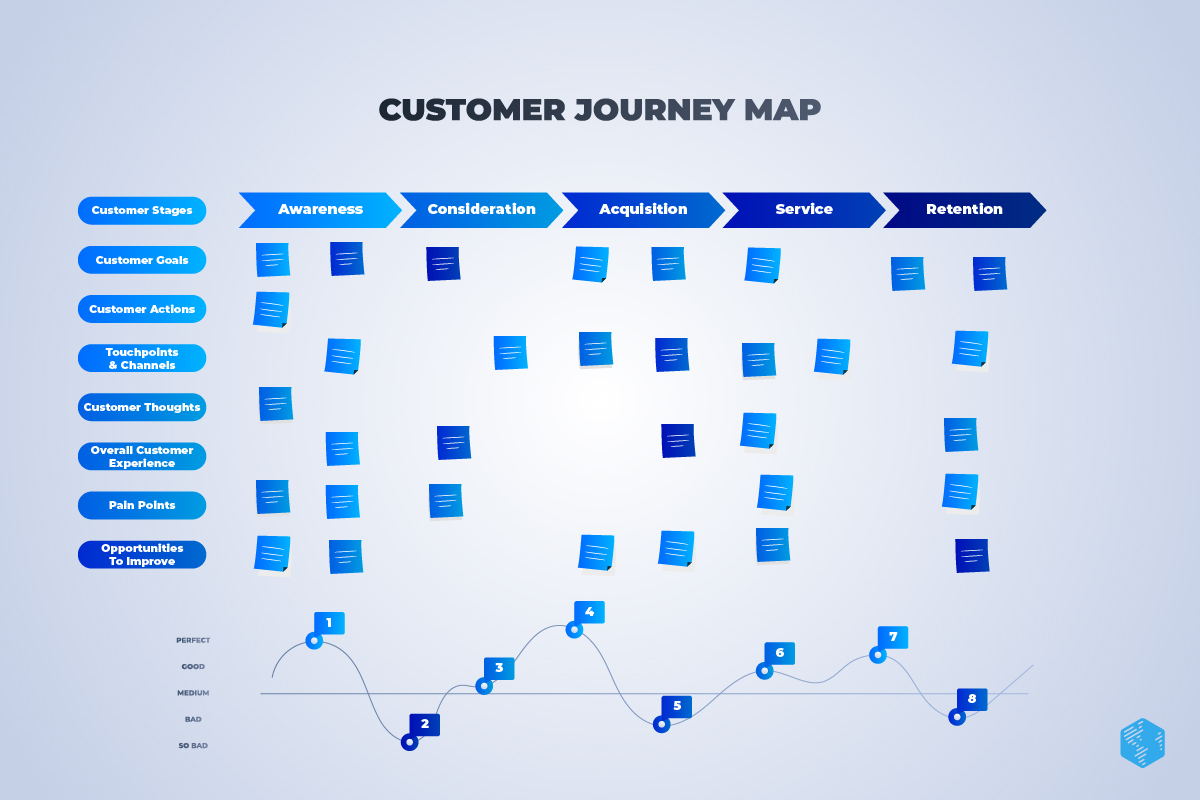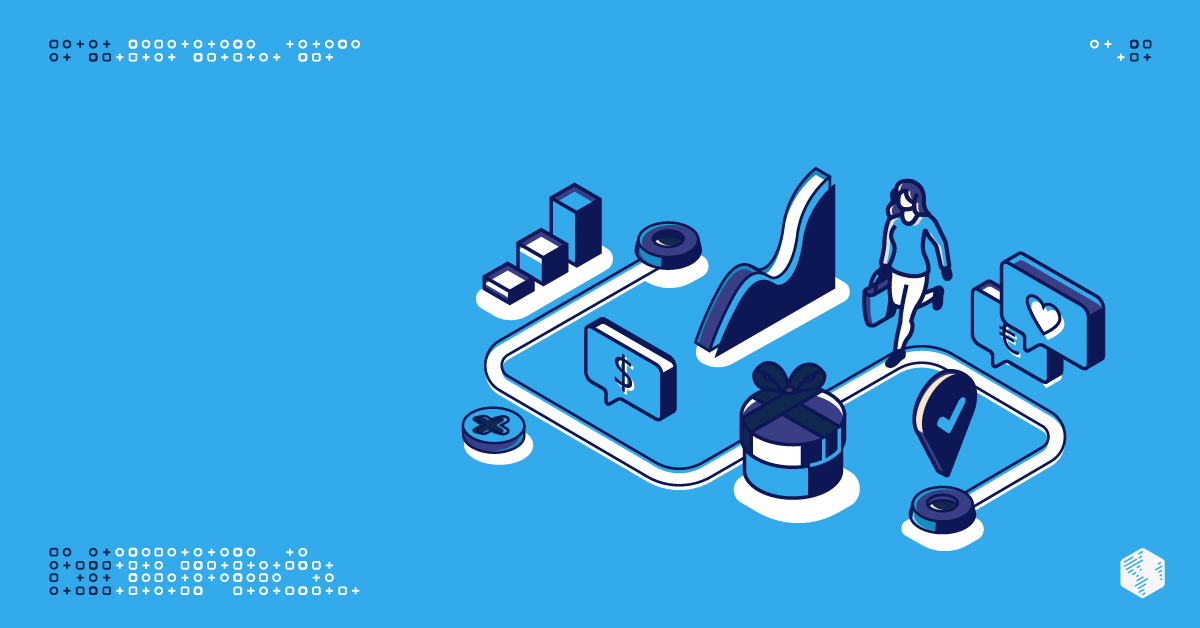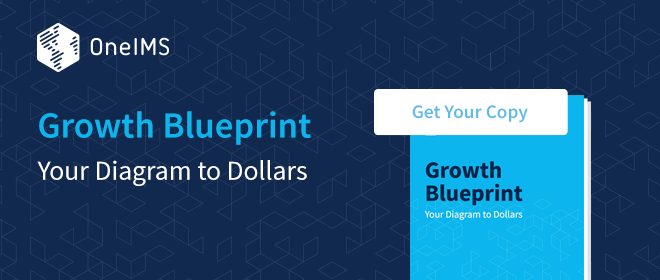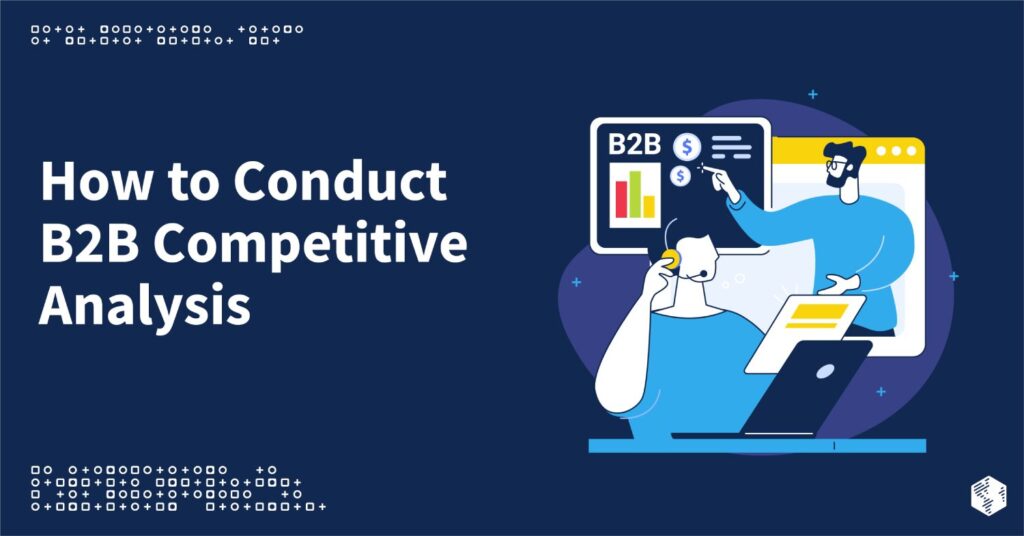What if you could get into the minds of your customer? You would not only be able to understand what made them back-out from taking the final leap after almost completing the purchase, but you could also work towards attracting more traffic and generating more leads. While you cannot really read the minds of your customers, you can get a comprehensive understanding of a customer’s motives with a customer journey map.
So, what is a customer journey map? And, what are the benefits of using one? OneIMS seeks to answer all your questions through this detailed guide, complete with a step-by-step process on how to plot a customer journey map for your business.
What is a Customer Journey Map?
The actions taken from the moment a customer first discovers your product to actually purchasing is known as a customer’s or a buyer’s journey. When you plot this journey on a map, it becomes the customer journey map.
The definition is simple but the process, in reality, is quite complex. For one thing, the journey is not linear, because customers often go round in cycles and take a step back before moving forward again.
The time taken to move from point A to point B is different for each customer, and it is influenced by many external factors. For example, when a customer buys a product it is not only based on the preference of the customer. The decision is influenced by their behaviors, concerns, and limitations as well as life experiences.
This is the reason you cannot and should not predict how a customer would interact with your business. With a customer journey map, you become your customers and you walk in their shoes to understand their unique reality. Thus, it becomes easier to guide them towards completing your intended goal, which is making a purchase.
With the help of your customer journey map, you will know exactly at which point on the map a customer is standing. Once you have this information you can utilize it to guide your customer’s journey forward by giving them the answers and information they are seeking.
Steps for Creating a Customer Journey Map
1. Define Your Objectives
Before you start plotting your customers’ journey on a map, you need to ask yourself the following questions:
Once you know the answers to these questions you can identify and create your buyer’s persona, which is the representation of your typical customer based on their demographics and psychographics. Your customer’s journey map will then follow this fictitious buyer through their interactions with your business. Having this persona will let you direct your customers’ journey map towards them.
2. Create Your Ideal Buyer’s Persona
When creating your buyer’s persona, you must base it on research and real data instead of assuming and depending on your intuition. Many times, businesses make wrong marketing decisions when they base their strategies on their intuition rather than solid evidential data. It might seem obvious but many marketers forget that what appeals to you might not seem particularly interesting to your target customer.
Hence, to map a customer’s journey, you need to first create a buyer’s persona that is as close to your real customers as possible. You achieve this by asking for feedback from your existing customers and conducting a survey among the interested ones. Some questions that you should include are:
- How and where did you first learn about our business?
- What are the problems you are trying to solve with our products or services?
- What did you find attractive in our brand?
- If you have already made a purchase with us, what was your deciding factor to do so?
- Have you ever proceeded to make a purchase with us then decided not to go ahead with it? If yes then can you state your reasons?
- How helpful do you find our website?
- How has been your experience with our customer support?
- Is there anything else we can help you with?
Once you have enough data from the survey and the feedback utilize it to create your ideal buyer’s persona.
3. Identify and List the Touchpoints
Touchpoints are where your customers directly interact with your business. For example, this can be a social media post they engage with, a blog post on your website that they click on, or an email newsletter they open.
List down all your touchpoints that you are presently using as well as the ones you intend to use without overlap. By doing this listing you can get valuable insights into how and where your customers are interacting with your business. Are your customers using too few touchpoints? It might mean that they are not finding what they are looking for and thus turning away from your website too quickly. On the other hand, too many touchpoints might indicate a complicated website that requires visitors to follow too many steps to reach their end goal.
Either way, listing and evaluating all your touchpoints can help plot your customer’s journey map with touchpoints that would make their route towards the end goal easier and faster.
4. Map the Current and Future State
Once you have the buyer’s persona and the touchpoints, use them to create a current state map of your customers’ journey. A current state map will showcase where your customer currently is on their journey.
This current state map is a good way to visualize the gaps and pain points your current customers are facing while interacting with your business. Utilize this data and insight to then create your future state map.
The future state map will show the ideal journey that your customers will have when interacting with your business. With the current state and future state map, you can lead your teams to improve on the weaker areas in order to help improve your customers’ journey.
5. Take the Journey as a Customer
The whole mapping process remains hypothetical unless you take the journey yourself to find out the pitfalls, see what touchpoints are providing the best interaction experience and where you can improve the processes to improve the journey.
To say it more clearly, the difference between the current state and future state map would be best covered if you make the journey yourself as a customer of your business. You can identify the gaps and identify the resources required to fill in those gaps. This will allow you to make the necessary changes in your organization that will lead to improving the experiences of your customers.
By understanding these practical implications of the map, you could use it to better your customers’ journey, leading towards increased brand equity for your company.
What are the Benefits of Customer Mapping?
A major benefit of customer journey mapping is that you can trace your customers’ experience every step of the way. It will help to eliminate any gaps you might have in interacting with your customers, and this information will not be based on your assumptions but on your customers’ reality. Other benefits include:
Realign Your Business with Inbound Strategy
Outbound marketing strategy is disruptive and annoying for uninterested customers. Businesses are discovering the pleasures of inbound marketing because it brings customers to you in a non-invasive way. It is also efficient and cost-effective.
Inbound marketing relies big-time on content – relevant and useful content – that is not sales-focused but aims to assist customers. However, to create content that will be relevant to your customers you must know where they stand in their buyer’s journey, which is where the map comes in handy.
To give an example, you might think that content rich with keywords will help attract customers to your business. But have you thought what if people don’t even know about which keywords to use when looking for the products you are offering?
This is where customer journey mapping comes into the picture. You plot the journey of your customer from brand awareness to making a purchase decision and create content for each step along the way to guide them towards the end goal.
Offer Better Customer Service
By plotting your customer’s journey visually through a map, you can effectively see the points where your customers might experience frustration or delight. This information is crucial to proactively plan ahead for your customer service strategy.
By plotting your customer’s journey visually through a map, you can effectively see the points where your customers might experience frustration or delight. Click To TweetBy planning ahead with a customer strategy, you will be able to intervene at ideal times, thus leading to customer satisfaction and increased brand value.
For instance, you can program your chatbot with information that your customers usually seek during a particular point in their buyer’s journey. By doing this for every stage of the map, you ensure that your customers always have access to the assistance they require.
Are Your Ready to Create a Customer Journey Map for Your Business?
If you have any further questions on customer journey mapping, do not hesitate to contact the OneIMS team. Our professionals can guide you and help you to create a customer journey map for your business.




































